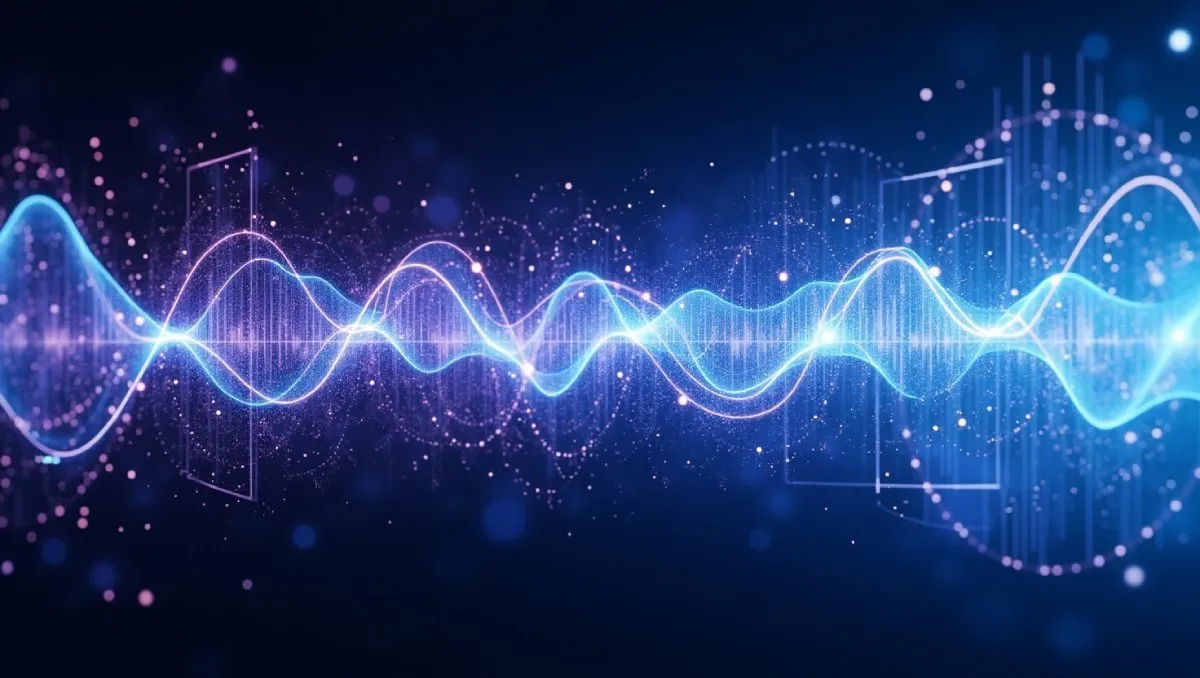Introduction: The Quest for a Restful Night's Sleep with Binaural Beats
In our modern world, getting a good night's sleep can often feel like an elusive dream. With endless stressors, digital distractions, and an ever-increasing pace of life, many of us are turning to innovative methods to help us unwind and recharge. One such method that has captured widespread attention is the use of binaural beats. This article explores what binaural beats are best for sleep, how they work, and how you can integrate them into your nightly routine for improved sleep quality. Whether you're a long-time advocate of binaural beats meditation or just discovering the potential of binaural audio for sleep, read on to learn how specific binaural frequencies can transform your nights.
Understanding Binaural Beats for Sleep
What Are Binaural Beats?
Binaural beats occur when two slightly different sound frequencies are played into each ear using quality binaural headphones. For example, if one ear hears a tone of 250 Hz and the other hears 260 Hz, your brain perceives a third tone—the binaural beat—at 10 Hz, which is the difference between the two frequencies. This phenomenon, known as binaural entrainment, is believed to guide your brainwaves into a state that is optimal for relaxation and sleep.
The Science of Binaural Frequencies
The key to understanding how binaural beats work for sleep lies in the concept of binaural frequencies. Our brain operates at various frequencies associated with different states of consciousness:
- Delta Waves (0.5–4 Hz): These are the slowest brainwaves and are linked to deep, restorative sleep.
- Theta Waves (4–8 Hz): Often associated with light sleep, dreaming, and deep relaxation.
- Alpha Waves (8–13 Hz): Linked with a state of relaxed wakefulness, useful during the transition to sleep.
By harnessing these frequencies, particularly delta and theta waves, binaural beats can help your brain transition from a state of wakefulness into the deep, rejuvenating sleep necessary for optimal health.
How Binaural Beats Impact Sleep Quality
Brainwave Entrainment and Sleep
The process of binaural entrainment works by synchronizing your brainwaves with the frequency of the binaural beat. When you listen to beats tuned to delta or low theta frequencies, your brain is encouraged to adopt these slower rhythms. As a result, you experience a shift into a state that is more conducive to sleep. For many, this means falling asleep faster and experiencing deeper, more restorative sleep cycles. It’s a natural, non-invasive way to support your body's own sleep mechanisms.
Binaural Music for Sleep: A Soothing Symphony
Many people have found success with binaural music for sleep. These specially designed soundtracks blend ambient music with binaural beats to create a calming soundscape. The music not only masks disruptive background noise but also guides your mind into a state of relaxation. When paired with the right binaural frequencies, this method has the potential to transform your sleep experience, making it both deeper and more refreshing.
The Best Binaural Beats for Sleep
Delta and Theta Frequencies for Deep Sleep
When it comes to choosing what binaural beats are best for sleep, delta and theta frequencies are often recommended. Delta frequencies (0.5–4 Hz) are known for their association with deep, restorative sleep. Listening to these beats can help quiet your mind and encourage the deep sleep stages essential for physical recovery and cognitive function. Theta frequencies (4–8 Hz), on the other hand, are associated with light sleep and dream states, making them perfect for those interested in binaural lucid dreaming. Both of these frequencies can be effective when used correctly, and the choice between them may depend on your personal sleep needs.
Crafting a Binaural Sleep Playlist
A curated playlist can be a game-changer in your sleep routine. Start by selecting tracks that specifically target delta or theta waves. Many apps and online platforms offer pre-made binaural sleep sounds playlists that blend soothing ambient music with carefully calibrated binaural beats. When building your playlist, consider the duration of each track and how they transition from one to another. A gradual progression from higher to lower frequencies might help your brain wind down more naturally.
Personalizing Your Sleep Experience
Everyone's sleep needs are unique, and so is the way we respond to different binaural frequencies. While some individuals may find that deep delta beats work best, others might prefer the gentle, dream-inducing qualities of theta frequencies. Experiment with different tracks, volumes, and session lengths. Keep a sleep journal to track how you feel each morning and note any changes in sleep quality. Over time, you'll be able to fine-tune your selection and create a personalized sleep solution that works perfectly for you.
Integrating Binaural Beats into Your Nightly Routine
The Role of Binaural Sleep Sounds
Incorporating binaural sleep sounds into your nightly routine can be simple and effective. Here are a few strategies to help you get started:
- Set a Regular Sleep Schedule: Consistency is key when it comes to sleep. Use binaural beats as part of a nightly ritual that signals to your body that it's time to wind down.
- Create a Relaxing Environment: Dim the lights, reduce screen time before bed, and create a calm, clutter-free sleeping space. The combination of a soothing environment and binaural beats can be a powerful sleep aid.
- Combine with Relaxation Techniques: Consider pairing your binaural beats with other relaxation methods such as deep breathing or gentle stretching. This can enhance the entrainment effect and lead to a smoother transition into sleep.
Using Binaural Audio for Sleep: Tips and Best Practices
For optimal results when using binaural audio for sleep, here are some best practices to follow:
- Invest in Quality Binaural Headphones: High-quality headphones are crucial for ensuring that the distinct frequencies reach each ear. This ensures the binaural effect is maximized.
- Keep the Volume Moderate: Loud volumes can be counterproductive. Set your audio at a comfortable level that promotes relaxation without causing distraction.
- Experiment with Timing: Some users find that listening to binaural beats for 20-30 minutes before sleep is enough to prime their brains, while others may prefer to have the sounds play softly throughout the night.
- Evaluate Your Experience: Pay attention to how you feel in the morning. Adjust the frequencies, duration, and timing based on your sleep quality and overall restfulness.
Binaural Beats and Related Benefits
Enhancing Meditation and Mindfulness
Beyond sleep, binaural beats are also popular for binaural beats meditation. Many users find that the same principles that help guide the brain into sleep can also promote a deeper meditative state. Using binaural beats during meditation can help you achieve a calm, focused mind, leading to a richer meditation experience. If you're new to meditation, incorporating binaural beats may help you ease into the practice and achieve a more consistent state of mindfulness.
Binaural Beats and ADHD: A Cognitive Boost?
While the primary focus of this article is on sleep, it’s worth noting that some research has explored the potential benefits of binaural beats for ADHD. Certain frequencies have been linked with improved concentration and cognitive function, which could be beneficial for those managing ADHD symptoms. Although more research is needed to confirm these benefits, many users report positive experiences when incorporating binaural beats into their daily routines for enhanced focus.
Final Thoughts: Choosing the Best Binaural Beats for Sleep
Choosing what binaural beats are best for sleep ultimately comes down to understanding your own sleep needs and experimenting with different frequencies. The science behind binaural entrainment suggests that delta and theta waves are particularly effective for promoting deep sleep and relaxation. However, the true power of binaural beats lies in their ability to be personalized. By curating a playlist that suits your preferences, using high-quality binaural headphones, and integrating these sounds into a consistent bedtime routine, you can significantly improve your sleep quality.
Experimentation is Key
The journey to better sleep with binaural beats is an ongoing process of trial and error. Start with tracks that emphasize delta frequencies if your goal is to achieve deep, restorative sleep. If you’re more interested in experiencing vivid dreams or exploring binaural lucid dreaming, theta frequencies might be your go-to. Keep track of your progress, note any changes in your sleep patterns, and don’t be afraid to adjust your approach as you learn more about how these beats affect you.
The Future of Binaural Sleep
As technology advances, so do the possibilities for improving sleep quality through binaural audio for sleep. Researchers continue to explore new ways to harness the power of sound, and emerging applications may soon offer even more sophisticated methods for integrating binaural beats into our lives. From enhanced binaural sleep sounds playlists to personalized sleep solutions driven by smart devices, the future of sleep technology looks promising.
Embrace the Journey to Better Sleep
In our quest for better sleep, every small improvement can make a big difference. Binaural beats offer a non-invasive, natural way to help your brain transition into a state of deep relaxation and rejuvenation. Whether you use them as part of a broader binaural beats meditation practice or simply as a nightly sleep aid, these sounds can be a valuable tool in your wellness arsenal.
Remember, there is no one-size-fits-all answer to what binaural beats are best for sleep. It’s all about finding the frequencies and practices that resonate with you personally. With patience, experimentation, and a bit of persistence, you can unlock the full potential of binaural beats to transform your nights and boost your overall well-being.



